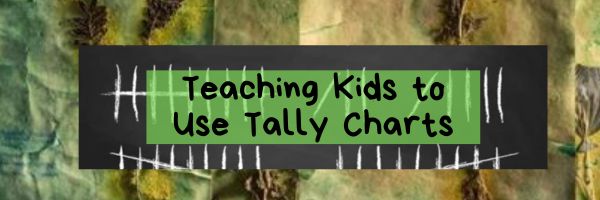Teaching Kids to Use Tally Charts: Fun and Educational Activities
As parents and educators, we are constantly on the lookout for creative and engaging ways to teach children important skills. One such skill is the ability to use tally charts, which are a simple and effective way to collect and organize data. Tally charts are not only a fundamental part of mathematics and statistics, but they also play a crucial role in helping children develop their analytical and observational skills. In this blog post, we will explore various fun and educational activities that can help you teach kids how to use tally charts effectively.
What Are Tally Charts?
Before we dive into the activities, let’s briefly explain what tally charts are. Tally charts are a way to represent and count data quickly and efficiently. They consist of a series of vertical lines, or strokes, with every fifth line drawn diagonally to make counting easier. Each group of five strokes represents a specific quantity, such as five, ten, or fifteen.
Tally charts are commonly used to collect and display data in a simple and visual format. They are especially useful when you want to count the occurrences of different items or events and compare the quantities. Tally charts are widely used in various fields, including science, sports, and business, making them an essential skill for children to learn.
Fun Tally Chart Activities for Kids
- Counting Objects: Start with a hands-on activity where children count objects and create charts to represent their counts. For example, gather a basket of different colored balls and have your child count how many of each color there are. They can then create a chart to record the counts for each color.
- Nature Walk Tally: Take your kids on a nature walk and ask them to tally different things they observe, such as birds, trees, flowers, or insects. This activity not only introduces tally charts but also encourages children to connect with the natural world.
- Favorite Ice Cream Flavors: Create a chart to find out everyone’s favorite ice cream flavor in your family. Each family member can vote for their preferred flavor, and the children can record the votes using marks. This activity not only teaches charts but also involves a fun ice cream tasting session!
- Tallying Daily Activities: Have your child keep track of their daily activities using charts. For example, they can tally the number of times they read, play video games, go outside, or eat fruits and vegetables. This activity helps them understand how data collection can be a part of their daily routines.
- Sports Score Tally: If your child is interested in sports, you can use graphs to keep score during a game. For instance, while watching a baseball or basketball game, they can tally the number of points each team scores. This real-life application of tally charts can make learning more engaging.
- Weather Tally: Create a weather chart where your child records the daily weather conditions, such as sunny, cloudy, rainy, or snowy. They can use marks to keep track of how many days each type of weather occurs. Over time, they can analyze the data and make observations about the weather in your area.
- Graphing Tally Data: Once your child has gathered data using charts, introduce them to graphing. Help them create bar graphs or pictographs based on their tally data. This step reinforces the connection between graphs and other forms of data representation.
- Tallying in the Kitchen: Involve your child in cooking or baking activities, and have them use tally charts to keep track of ingredients. For instance, when making cookies, they can tally the number of cups of flour, sugar, and chocolate chips used. This not only teaches tallying but also reinforces measurement skills.
- Chart Art: Encourage your child to get creative with charts by turning them into art projects. They can create colorful tally graphs and use them to represent their favorite animals, fruits, or cartoon characters.
- Challenge: Organize a challenge where your child competes with their friends or siblings to see who can tally the most items accurately in a set amount of time. This friendly competition adds an element of excitement to learning tally charts.
Benefits of Teaching Tally Charts
Teaching kids to use charts through these fun and educational activities offers several benefits:
1. Improved Counting Skills
Tally chart templates reinforce counting skills as children practice counting by ones and fives. You can try it now and see how it helps them become more proficient in basic arithmetic.
2. Enhanced Observation Skills
Creating charts requires careful observation. Kids learn to pay attention to details and gather data accurately, which is a valuable skill in various aspects of life.
3. Data Interpretation
As children collect and analyze data using charts, they develop the ability to draw conclusions and make simple predictions based on the data they have collected.
4. Real-Life Application
Many of the activities mentioned involve tallying real-world data, making the concept of tally charts more tangible and relatable for children.
5. Creativity and Engagement
Turning tally charts into art or participating in challenges adds an element of creativity and excitement to learning, keeping children engaged and motivated.
6. Foundation for Data Literacy
Understanding charts lays the groundwork for more advanced data literacy skills, such as creating and interpreting bar graphs, histograms, and scatterplots.
Conclusion
In conclusion, teaching kids to use tally charts through engaging and interactive activities is a wonderful way to foster their mathematical skills and cultivate a love for data analysis. By involving children in real-life situations, such as nature walks, family polls, and kitchen adventures, we can seamlessly integrate charts into their daily lives, making the learning process enjoyable and practical.
These activities not only introduce children to the concept of charts but also equip them with essential life skills. They learn to count accurately, observe details keenly, and draw conclusions based on data—skills that are valuable in various academic subjects and future careers. Moreover, as they progress in their education, they will find that charts serve as a fundamental building block for more complex data representations and statistical analyses.
–image credit Deposit Photo
Here’s the sign-up link if the image above doesn’t work:
Jacqui Murray has been teaching K-18 technology for 30 years. She is the editor/author of over a hundred tech ed resources including a K-12 technology curriculum, K-8 keyboard curriculum, K-8 Digital Citizenship curriculum. She is an adjunct professor in tech ed, Master Teacher, webmaster for four blogs, an Amazon Vine Voice, CSTA presentation reviewer, freelance journalist on tech ed topics, contributor to NEA Today, and author of the tech thrillers, To Hunt a Sub and Twenty-four Days. You can find her resources at Structured Learning.







































This article on teaching kids to use tally charts is a valuable resource for parents and educators alike. The emphasis on introducing a fundamental and visual method like tally charts is crucial in building a solid foundation for children’s understanding of data representation.
The step-by-step approach outlined in the article is commendable, breaking down the concept into manageable stages. The inclusion of practical examples and interactive activities makes the learning process engaging for young minds. It’s evident that the article is designed with the child’s perspective in mind, making it accessible and enjoyable.
Tally charts are not only a practical tool for counting but also serve as a gateway for kids to grasp more complex concepts in data analysis later on. This foundational knowledge can set the stage for a deeper understanding of mathematics and statistics as they progress through their education. https://www.ourgreenstreets.org/org/asda-holt-park-recycling-site/
Couldn’t agree more, George. That visual approach is often the only effective one for many kids.